The Heart of the Matter
“Remembering that you are going to die is the best way I know to avoid the trap of thinking you have something to lose. You are already naked. There is no reason not to follow your heart.” —Steve Jobs
The Calm
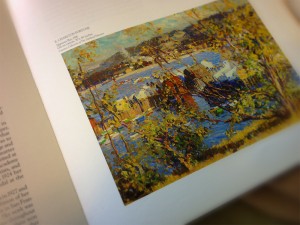
Everyone understands the appeal of seeing familiar places in old paintings or photos. Think back on the early California paintings of Monterey, for example; who does not enjoy E. Charlton Fortune’s views of the harbor, for example, as it was then? In the same way that we find old photos of places fascinating because they give you a sense of how things were, so old paintings do the same thing. They evoke a feeling of how it was in the old days before we paved everything over to accommodate vehicles. More than old black and white photos, paintings can have an emotional quality because of lush color and brushwork. You can feel the landscape, feel the sun on your skin, almost smell the air.
So in the early 90s, a loose-knit group of painters used to meet in the old farm valley just south of San Jose, California, called Coyote Valley with this in mind, preserving the farmlands in paint in advance of the impending development of the land into acres of asphalt, glass and steel. The deal was done, the land already divided into parcels, ready for economics to trigger development. The Coyote Valley painters could envision people a hundred years from now viewing their sunlit paintings. They could imagine them exclaim “Look! There used to be a lovely farm right here in this parking lot!”
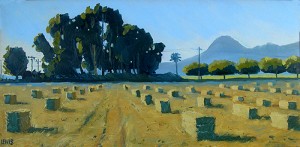
This painting group and, I imagine, many others like it across the country, would meet somewhere after painting for an instant exhibit or “critique”, leaning wet paintings against a fence, chatting about their experiences, sipping their coffee from paper cups, and giving encouragement to one another before heading back home, tired and sunburned. The conversation was never about selling. It was always about painting, gear, paint, brushes and locations. Sometimes it was about finding a place to show.
Perhaps it is just my personal bent of mind, perhaps I am alone in this, but whether I painted well or not, on days like that I felt I had fought the good fight, earned a bit of satisfaction, and knew that my painting, good or bad, if it survived the years, would mean something to someone far in the future. I also had the sense that my fellow ragtag group of artists was part of a larger “movement”.
Stirrings
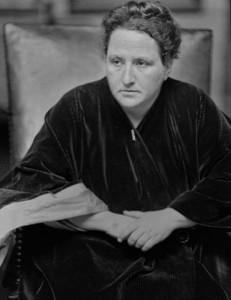
The idea of a movement stirred much in me. That these stirrings were felt by many others across the country, I never had a doubt. Images of old photos of artists and writers sitting around tables in Paris cafes or in Gertrude Stein’s apartment swirled before me. You’ve seen them, old photos from the early 1900s. Look closely, isn’t that Picasso, isn’t that Hemingway, isn’t that…? They all became legendary. Stories of the beginning flourishing of the early California Impressionists, art history books filled with paintings of light and landscape of the two decades or so after the San Francisco fire of 1906. That was a movement. It came, flourished, and passed into history, an inspiration for a new movement. And here, right before us, was that fledgling movement, one filled with a unique spirit that whispered to the heart of the artistic person. Perhaps we would become legendary, too.
Legend, fame, all good things. However, this movement required a degree of mental and physical strength, perseverance, even bravery. And health. This was not a dissolute, absinthe-drinking movement of Paris but one that required energy and a clear mind. It was not the movement of the ground-breaking California impressionist; it must build on that and take their achievements to a new level. It wasn’t just a day at the park painting pretty pictures, either. No, in order to get to the heart of the landscape one must be deeply of the landscape and engaged at a foundational level, that is firmly planted and steady like a tree, quiet as a fox watching, and light, adaptable and changeable as the wind. One could not just sit comfortably and dabble.
In this artistic movement, the heroes were the ones who arrived angry and ready for a fight. Angry at anything inside that complained, and ready to fight those tendencies and any other onslaughts from nature. This beautiful movement would be filled with adventurous painters who left the ordinary world behind, captured the prize, and brought it back, a gift for all to see. Count. Me. In.
Deep Breath
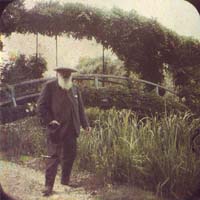
My head spins from these lofty thoughts even today. In those days, I believed all plein air painters felt the same way. It was what I breathed, what I devoured, out there alone on a trail to some pastoral scene or stand of eucalyptus that I had spotted from far away. Isn’t it called “transference”? Projecting your feelings onto others. Honestly, at the time,
I never doubted that most plein air artists felt the same. However, in light of how things are now and looking back on that period, a disturbing thought passes across the mind like the shadow of a large, circling bird, the thought that perhaps the “movement” was all in the mind of one crazy, dehydrated, sun-stroked artist who had spent far too much time out in the field and who was trying to make more of what was actually there.
Help me. Take a deep breath, think back, did these ideas live in your mind as you made the landscape live on your canvas through your admirable, even heroic effort? Did you not feel part of something larger, something grander? Did you not feel a place in history? Please, tell you me did.
The Storm
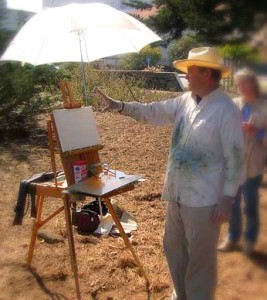
Take note that the thought of money has not crept in yet. As the movement ramps up this will change. So, in a flurry of action and events, like a storm, the plein air movement comes full force upon the scene. The gradual shift from painting for yourself to painting completely for others happens in distinct, incrementally insidious stages in the plein air movement. First, teachers emerge, followed by painting demonstrations, and workshops.
Second, plein air competitions, first one here, one there, suddenly begin proliferating like mushrooms all over the country. This is wonderful in many ways and I’ve done “the circuit” as my East Coast friends refer to it, traveling from one competition to another picking up sales and prize money. It is social, it’s fun, it’s exhausting. The best competitions from the artists viewpoint are the organized events that are the culmination, the high point of the plein air movement.
But as time goes on one begins to see that, nice as some competition organizers are, it all comes down to sales, that is, did you sell enough paintings at the final show. Eventually, no matter how good a painter you are, if you didn’t bring in enough money for the sponsoring organization then you don’t make the cut next year. Artistic Darwinism. But, I question whether sales is the proper criteria for ongoing inclusion. These competitions are marketed as events that promote the arts and support artists. Really? Isn’t the truth that these are fundraising events that have the side benefit of making the organization, specifically an arts organization, look like it is fulfilling its charter? Why not do both? Because you can’t make the criteria sales while at the same time promoting excellent work. That is because you leave the judgement up to the buying public which varies in taste from region to region, pocketbook to pocketbook. Create a competition that brings the best work forward, the best work artistically, and do your fundraising a different way.
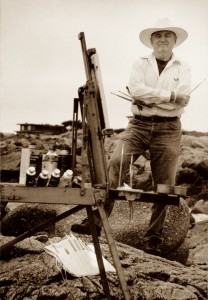
Then, in this inescapable march to becoming a commodity, you are spotted by the entrepreneurs. Shrewd like a fox sensing a prey, they sense an emerging, lucrative market. They smell it, they smell you, and you smell good. You smell like money. This market you are part of has huge growth potential, because the bulk of your fellow painters are entering this market as they are retiring from work life directly into plein air life. That market is you, the plein air painter. You are the tasty little prize they mean to capture.
An array of websites proliferate, offering the artist everything from website hosting and promotion to print on demand “giclee” prints, a shmancy name for a digital print. Existing art magazines begin writing about plein air and, more importantly to the entrepreneur, selling ads to these burgeoning businesses that produce every product from plein air easels to canvas panels to paint. An economic ecosystem forms quickly.
Those established art magazines were just playing catch up however, because we see the emergence of a new magazine devoted entirely to the subject, Plein Air Magazine. In every way, it is the perfect vehicle for promoting its crowning and truly brilliant marketing achievement, the Plein Air Convention, a convention for plein air painters.
Now, Down to Business
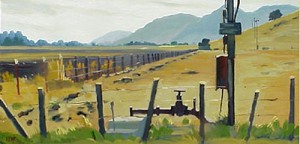
Everything has come together in a nice, neat package, a cradle-to-grave solution for the retiring or aspiring artist to become a plein air painter. Paint as you are told, paint what you are told, join the club, volunteer your time, and fame or, more realistically, selling success will come your way. The market for paintings has been figured out for you. What works. What doesn’t. How to paint successfully. How to get your work in galleries. What to charge. What kind of website host to use. How to take credit cards. How to make prints of your work. How to market your work. Everyone wants you now, none more earnestly than the entrepreneurs themselves. The system, plein air incorporated, is now in place.
If you are still with me, you sense I am about to reveal what is wrong with this picture. Bear with me while I describe the marketing system first, the system in which you, the painter, are the customer. At every step of the way, at every level of entry, you have been presented with another way to spend your money to advance the visibility of your work. The scheme is brilliant and not without huge benefits. Spend your money on advertising. Advertise your paintings. You need exposure. If you think you can teach, buy an ad to promote your workshop. The bigger the ad the better. The bigger the ad the better the artist, isn’t that right? If you have a following that you’ve put together, you may be invited to teach, gratis, at an event or to demonstrate your outdoor painting techniques indoors. (Don’t get me started.) Every question has been answered except one.
Rubber, Meet Road
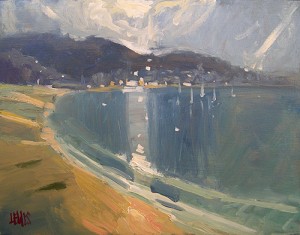
Here is where it gets tough. Why did you become a plein air painter? I ask you again, why? Why did you become a plein air painter?
Are you able to answer that question? Nothing in the system above asks this question about your fundamental motives or aspirations. In fact, questions like this are purposely not raised for a very good reason. From the point of view of the system, it is best that the customer, you, be told what your motive should be, it should be to become successful. And who can argue with this?
Define successful. The definition of successful within this narrow system is that your paintings sell, and they sell more, and more. It’s about selling. It’s about money. It’s not about painting. Bottom line, if you sell you are a successful artist. The definition isn’t, “you are successful because you tried something different with the paint and discovered a new way of showing sun on water”. It is not, “you are successful because your painting is more than just a pretty picture, but rather it elicits an emotional response that is deep”. It is not, “you are successful because you have shown us a familiar subject in a way we have never seen”.
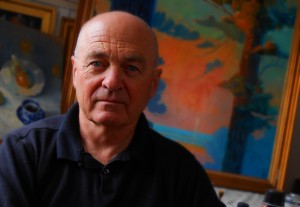
Because the system, in a very subtle way, deflects the real question and herds you into this market-driven way of thinking, you end up painting to their goal, not yours. You paint not what you want, but what you think will sell. You are brought into a world of salesmen selling you how to sell. If selling is why you became a painter then do, wholeheartedly and without reservation, try to top Thomas Kincade. He knew how to sell.
Now, those of you whose goals exactly match the goals of the system will disagree with me, and you will be right in a way because no one can tell you why you paint. No one is telling you, including this writer, that selling is bad. But for those who became a plein air painter because the goal is honoring the “beauty embedded in the subject of the painting.” to unabashedly quote myself from part one, then you will see that the plein air movement has been co-opted and quietly put to rest by market forces which threaten the quality and integrity of the body of work that you will leave behind when you die. Because of this, I say the plein air movement is dead.
All is not lost. We have nothing to lose now. If we understand and honor why we paint, if we follow our heart, your paintings, and mine, will be in the art history books one day, not because we sold well but because we painted well.
###
Epilogue: As time permits, I will follow up this essay with an epilogue containing some ideas on what to do and what not to do concerning the “system” we have. I hope they will spark a conversation that will bring back some of the initial glow of the plein air movement.


Wow Robert. You have practically said word for word what my thoughts have been for several years. You have the ability to concisely state it. Thank you. I think the artists who get hurt the most from this are those who look up to the well established artists who have bought into it.
Thank you. It’s tough, does one buy in or not? I haven’t figured it out yet, but I believe there is another way to do all of this.
I have struggled with the plein air “movement” as well. My initial reason to paint outside was because I LOVE being outside. Add to that, I love to travel and I love to paint. They all go together very well. Throw in the competitions and the sales and it can lose its luster, but only if we let it. For awhile there, I got burned out. running all over to paint, compete, sell. So I cut it back last year to a few events. But I miss being out there and I miss learning from life and I miss the company of artists. At this point, I am looking for the balance. Do a couple of events, then go out to play/paint on my own. If I sell something to help cover my cost of getting there, GREAT. IF not GREAT. Basically, I can create my own experience by letting go of results and sales. Instead, I am surrendering to the moment, to the creative process and to having a little bit of fun while I still can.
I was prepared to disagree with this article….but I wound up agreeing with you completely.
Thanks for being patient, and hearing the whole argument. This has sparked a lot of conversation and maybe some good things will come out of it.
Thanks again Robert. After all, isn’t conversation about art what keeps us all engaged?
Really eloquently stated, Robert. Thanks! Brilliant essay. As Ann also said, you’ve expressed what’s been on my mind, as well.
Hi Robert, thank you for this insightful piece. I enjoyed reading this article and look forward to your next one.
I agree with your views, and the same can be said for my daily struggle in being an Architect. Thank you for reminding me of what the core impetus always was for me.
Wow Robert! You nailed it, and with the passion of someone who cares and is pained at the state of out door painting. I say “outdoor painting” because some time ago, I decided that I no longer belong to the other fancier “movement”.
I must admit that I am guilty of facilitating the processes that you have described. back in 2009, I started Ontario Plein Air Society because I didn’t want to paint along on the side of the road anymore. I was fed-up with the lone wolf approach and wanted to be part of something more. something different. OPAS has since grown to 150 members among them the current president who is in the business of setting up workshops for plein air artists.
I still paint outdoors. I love it because I get to come face to face with the truth and struggle to make it mine. To interpret it. Sometimes I win, many many more times, I lose gloriously lose. Most importantly, I have never set out and will never set out to paint a masterpiece in nature. I consider most of the work I do outdoors STUDIES. Sometime they are no more than color notes. Literally dabs of color that I see. Notes for something more. Observations for a deeper truth that comes in a more contemplative process in my studio or sometimes outdoors. Either way, the end was never the outdoors. It was color and design. Always was, always will be. The outdoors is where I go for inspiration and where I search for the truth. The truth that I then have to make into my personal narrative.
They didn’t break outdoor painting Robert. They took some of the joy out of it and filled it with noise. It is up to us to wash it clean and go back to our honest visions and continue our quest for truth that we can narrate.
Very thoughtful comment. I understand that many artists do use plein air for “notes”. I have never done that. Perhaps I should! I am happy to hear, as you say, that “The outdoors is where I go for inspiration and where I search for the truth. The truth that I then have to make into my personal narrative.” Well put.
thanks buddy….this is great!
Hi Robert,
Your article was sent to me for my review. I read it with sadness. Really. I am an organizer of such an event and while sales are necessary for the event to go on, I never felt that artists were selling out to their inner self/souls/life convictions to participate. They opt to participate. No one makes them apply. I think of our efforts as a collaborative arrangement with the artists, the public, our sponsors, and the organization.
A question for you is, if you paint for self satisfaction not caring whether you sell or not as you perfect your skill, wouldn’t your studio/garage fill up to capacity? Then you’d have your spouse yelling at you to clean out the space. Maybe it is a question of being a retired person financially able to paint for enjoyment rather than for a professional artist trying to earn a living to support himself/herself and their families? Professions tend to denote a person does get some pay/recognition for their efforts.
I would hope that the world of plein air painting and associated ‘events’ are not dead or dying. I love the connection we have with the artists and our residents/visitors. From my perspective I want to make sure artists want to apply to participate for without them there is no event, there is no documentation of how the landscape existed as you pointed so aptly in your article, and it would be another step in the increasing movement to take ART out of our lives. Artists’ bring a keen sense of kindness, are generally fun to be with and socialize with, and give others a gift of sharing that is quite frankly not shared in many industries, organizations,or individuals.
P.S. Now I’ll need to read your other articles.
I paint plein air because I love the challenge and immediacy that test my artistic skills. Luckily I am not depending on sales to support me, so can free myself from the drudgery of marketing/selling. We need to find ways to make our art more accessible to the general piblic. Both cost and a belief that original art can only be enjoyed by the monied class limits both ourselves and our patrons. No easy answers. The rarified atmosphere of the exceptional talent is one thing, but a large quantity of quality journeyman also exists that needs a market for their efforts. There is a huge gamut of quality out there, but only a limited market – thus the temptation to join the bandwagon to boost recognition. We struggle with philosophy ad well ad art.
I paint plein air because I love the challenge and immediacy that test my artistic skills. Luckily I am not depending on sales to support me, so can free myself from the drudgery of marketing/selling. We need to find ways to make our art more accessible to the general piblic. Both cost and a belief that original art can only be enjoyed by the monied class limits both ourselves and our patrons. No easy answers. The rarified atmosphere of the exceptional talent is one thing, but a large quantity of quality journeyman also exists that needs a market for their efforts. There is a huge gamut of quality out there, but only a limited market – thus the temptation to join the bandwagon to boost recognition. We struggle with philosophy as well as art.
I like and respect your observations, but I think the movement is strong and growing. There is much evidence, and frankly most of it is not about selling or sameness. Yes there are ample people making a living, much because of the demand for paintings, however MOST of the people I know who paint would do it anyway even if they never sold a thing. Most want to twist, and turn, and grow out of their comfort zone to become better painters. Of course there ARE examples of some who use a formula, which sells. It works for them. It does not necessarily mean they are not painting what they love, or what stretches them. If someone becomes known for a style and they continue to paint in the style, its acceptable. But most refuse to do that, and most want to continue to grow. There is some sameness and some who insist that there is only a specific way to do it, but after watching close to 80 demos on stage, very few, if any, were formula painters. Most are responding to their hearts.
You “like and respect” my observations. I am curious which observations you like, in particular.
I can not disagree that artists can do what they want: Think only about selling, think about painting and selling, or just think about painting. Of course. None of my business. I am not setting rules. My essential observation is that where, in my experience, plein air artists used to talk about locations, experiences, material, etc., now they tend to talk about selling. This is a shift away from the original vision of the movement. And who said this was the original vision? Me. It was my original vision and I think it is clear in this personal essay that I speak for myself, with the strong suspicion that there were others who felt the same. This suspicion has been proved by some of the comment here.
You are certainly right that artists continue to want to grow. They fill workshops, attend demos, and practice. Insistent as this sounds, perhaps even stubborn, let us move the goal of that effort away from a market focus and concentrate fully on an artistic focus. The rest will follow. Including good, maybe even better, business.
Hi Eric (Rhoads)……..Yes,I believe your are correct in that most of us would paint no matter what,and most paint what we do love. How then could we continue painting for years and through pretty hard circumstances at times.I have been painting en plein air for twenty plus years…and like most outdoor painters , this is what centers me, and makes life grand… I guess there are painters that painting is life…….and those that just ride the plein aire train , because its what seems to be the in thing at this time….Sometimes I like to just say …Yes , I paint on location…Cheers……….
Dear Robert, I have been married to an artist who got caught into that plein air thing and spent hours and days over the years talking him into a better place, when frustrated and feeling like he was not part of what he thought he was. Upon reading all the way to the end, I was thrilled to read the exact question i asked him more than five years ago, when he had painted great works on a large scale for an event and not sold a thing. “define success” I asked and the conversation ensued to cover the point you made. If success is defined by great work and artistic endeavor that is true to you, you cannot get caught up in how much you sold. I asked him to determine how he would define his success and pursue it, not allowing others to define it for him by way if awards, sales, invitations etc.
Since he is making his way, not after a lucrative career in anything else (as many painting is a hobby or a second career) the struggle has been there all along.
Thank you for putting words to it for him (and me!) as he pursues “understanding and honoring why he paints, follows his heart and paints well” (to paraphrase).
Couldn’t agree more with your assessment of the “Plein Air” movement. I’ve been feeling this way for a great number of years now.
Coming from a master like you, this means a lot.
The reason I love plein aire painting is the opportunity to feel one with nature…one with God, the creator. When I am truly lost in the painting experience, my ego dissolves and I feel the joy of connection with the rest of creation. If I am surrounded by other painters, I am jolted out of that trance . I am then keenly aware of how I compare to them; I am now worrying about how good my painting is. I know that I am going to be judged, and that makes me self conscious. Self consciousness is the opposite of God consciousness. I am distracted by the chit chat, and the noisy hubbub. So, I will not be going to more plein aire conventions . I will just be searching for a quiet place to soak in God’s creation, and maybe capture a little of that magic in paint.
Beautifully put. Yes, I think letting the ego dissolve into the joy is the goal. Then the truth can flow onto your canvas if you have the technical skills. Even if you don’t, the piece will originate in Nature itself. I don’t want to say that plein air conventions are evil; I just want us to understand their place. They are not the culmination of this art form, just a side-effect. If you get something positive from the experience then perhaps it is worth the pricey ticket. But you can’t buy what you need to be good at this.
You write as well as you paint. I too have felt that the painters are the fodder for marketing geniuses but I’m sure they might find more lucrative victims— far more easy to take advantage of. It could be that that they too have a dream connected to this movement. They just have to make a living or make it “pay”. Some of us are lucky enough to not need the income and perhaps can remain true to the vision but the temptation is there to be successful. Post your painting on FB and check back every few hours to see how many likes you get—kinda screwed up but certainly human nature.
I always thought a good painting was a good painting and a bad painting was a bad painting whether it was painted outdoors or not. So many repetitious plein aire pieces out there.
Interesting article, thanks for posting it. I am new to plein air but it has provided me inspiration, education, a challenge and a peer group, all of which I cherish. At the moment I consider it to be my return to making art ‘life’s blood’. I have not been as excited about making art since I did non-objective work in the 70’s. We live in a commercial world so there is no negating the marketing of the movement if people are willing/wanting to accept payment for what they do. How much they let that drive their direction is an individual decision. I am too new to know about the ‘movement’ and the ‘death of plein air’, additionally because my work is rather off-kilter anyway. But for a newbie such as myself, it is exciting that opportunities abound. How rigged, crooked or political they are, I don’t know, and we can choose to buy in or not; but my jaded side says ‘welcome to our world’. Increased exposure and opportunities to learn, to meet people and to read, work for me. To date opportunities to join plein air facebook pages have taught me so much I can not express my appreciation. My personal choices to make use or not is my own determination and will not ruin the amazing process..
You have described middle class regionalist painters of whom are a part of a small group of people who validate other Mediocratic tendencies. Open Air painting goes back further than giotto or even carrapacio. People are not objects nor are they thinking of money. Plein sir painters are not disjunctive with their peer group having oitdoor art fairs with local unqualified ‘judges validating objective rational. Plein Air painters such as Macchioli painters and many other styles or techniques. It is as individualistic as many different ultures attempting to define a familiar or unfamiliar place and Plein Air painterrs are all over the globe with many different kinds of approaches As different as Constable,Neil Welliver,Racksttraw Downs,Lockwood DeForrest,Elaine De Kooning,Fairfield Porter and so on. Some Plein Air painters drink Tea and ride Camels.There are so many different ‘Plein Air painters as are there grains of sand.; way to vast to assume it is dead. Thanks Billy, you probably knew i would say ‘ something. Plein Air painting will never be dead as long as people continue to paint among the elements.
So well said, Robert. I can relate with much of what you’ve written.
My take is that our capitalist culture–and competitive nature of Americans in general, especially in areas like Silicon Valley–has degraded the arts overall, not just plein air. When I’m out painting, I often feel the pressure to both paint something worth buying and also something worth posting in social media. Social media has become this hungry beast demanding payment in the form of content. I can’t tell you how many sub-par paintings I’ve now regretfully posted on my blog or Facebook to feed that beast. By posting I’m saying, “Look, I’m relevant. Do you like me?” It can be rewarding to see Facebook “Likes” pile up for a post, and if I’m being honest, it encourages me. But in the end, those “likes” are just a measure of success from a crowd, and not where success should lie, my heart.
I’m trying, really trying, to disconnect the two (painting to sell vs. painting to paint), but it’s a difficult habit to break. I’m starting to get there because I’ve returned to a high paying “day job” that is giving me much more artistic freedom. But that’s a luxury, because I know many artists are relying on plein air work for sales. I try to help fellow artists sell by sharing my marketing expertise, and hopefully I’ve help some succeed. Perhaps that makes me part of “the machine”…something for me to think about. ☺
Regarding plein air “fundraising” events, oh my, I’m so glad these seem to be winding down. One year I did over a dozen–an exhausting feet as you well know. I’ve stopped doing them now, because I started to feel at times like a circus animal on display, but I have to say, there is some good there. Those events have introduced plein air painting to a new audience, those that don’t regularly visit galleries or museums. I ’ve seen that spark of interest and appreciation happen from those onlookers, and for that, I hope those times have meant something. In fact, I owe plein air painters for being a catalyst for my own interest as a child in the arts. I grew up in Orange County, and saw my first plein air artists working in Laguna Beach when I was about 8 years old (1968!). I’m grateful to those artists for sparking my own engagement in painting.
Speaking of events, I’ve been thinking lately about how to “disrupt” plein air events. Not in an Occupy Wall Street sort of way (although, hey, that could be fun!), but by creating an event that keeps the best attributes (connecting with fellow artists, painting together, meeting collectors), but avoids the worst (fundraising sales models, the competitive nature of them, “quick draws”—yuk!). My thoughts at this point are a pile of notes and ideas, but I hope someday to re-think these events in such a way that we can contribute to the arts in a truly meaningful way. I hope to share that with you some day and get your feedback.
Best,
-Ed
I hope everyone takes a moment to read this comment from Ed Terpening.
Ed, I agree that trying to paint to paint is a difficult thing to do. The marketplace creeps into our work relentlessly. It is a challenge to keep it out of your mind while actually painting.
However, I believe that if artists paint to their own vision to the best of their abilities then everything else will fall into place, including sales. But, absolutely do not think of sales, or social, while painting. This is a killer. You’ve lost the game if you fall into that. Paint well, don’t worry about the outcome. The quality of the work is the most important thing. You can not affect the outcome by worrying about market or social. Paint with a fierce mind focused entirely on being your best. Perfect your painting craft and all else will come. That is all.
Remember the movie Field of Dreams? Paint it. They will come.
Your idea of a “disruptive” event has legs! Excellent thinking. I see you borrowing a powerful idea from the tech world, disruptive technology. Sooner or later it will happen anyway, so let’s get going on it. Please develop this idea some more and share.
Anyone can do art for their own enjoyment whereever and whenever alone or in a group. You want to make money off it then you are entering into pro territory. It’s not a charity. Folks sell in galleries for a reason and put the business/promotion$$$ work into it. Southwest Art magazine is full of paintings. I’m in my studio everyday.
Yes………Yes………..and Yes again……Thanks for your thoughts…..
Wow…my head is spinning! It could be said that I am an artist in the body of a burnt out marketer. I am inherently tired of persuading anyone to do anything. I love to paint outdoors and in that my purpose is clear…if I learn something on each canvas I have “succeeded”. When I am outdoor painting with or without others I hardly see or hear anything that is going on around me…it is clearly the place I wish to spend most of my time. I looked up and lo and behold there were other painters enjoying the same experiences and I thought “we could grow together”! I have been frustrated with observing that there are so many really good artists with no marketing ability.(and marketing artists with no real skill) I don’t believe I have ever met one that didn’t enjoy help in showing or finding an opportunity to sell their work.
We recently had a home improvement show in our area and it was branded “Home is Where the Art is”. It made me ask myself a question: Where is your art? I mean is it in your closet? hanging on your walls? a gallery? a museum? someones home? a business? Where do you want it to be and just how do you get it there? I have never subscribed to the “romantic” idea of the secret artist who works all their life to create a masterpiece then you see their after death story written up in the local newspaper as their body of work hoarded is unveiled to the world. (Matthew 25:14-30 The Parable of the Talents come to mind)
I live in a state where art has historically been second to everything in the minds of the majority of the population. It occurred that I could help…so I dusted off my marketing hat. I founded the Plein Air Association in my state and I currently administer it. I believe plein air painting can be the cutting edge of art awareness in a culture that otherwise would never enter an art museum or a gallery. Most artists painting outside are approachable…even inviting or more inviting than a gallery. In a place that needs more collectors than anything else I think it is the best way to accomplish that. I see most “open” competitions as a great win/win/win situation for all. The artists get to have fun and camaraderie and an opportunity for award and recognition. They also get a little push from the competition to get better! The event organizer gets funds to continue in their endeavors and the collectors new and old get to view the work…interact with some very interesting characters and start or add to their collections…for me the magic is with the new collectors!!
To my utter surprise I bumped into “the machine” and some criticism when I did a survey of artists a few years ago asking the artists what they wanted from events…making my life a war zone for some time. (results here: http://wipapa.blogspot.com/2013/04/plein-air-survey-results.html) Who was I to do this??
I experience discomfort when the artists are the end customer instead of the art. I do the marketing because I can…it is my way of giving back.
This is a very, very comprehensive survey. I am impressed and I hope others take a look at it. Congratulations on what looks like a very well thought out survey with rich results.
I just thought I’d throw my two cents in. I paint en plein air because 1) painting is what I do and 2) I love being outside and also in front of my subject when painting. For me, this is the true core of it all. I do the invitational plein air events – I’ve done Sedona six times (heading down for a seventh this fall); the Grand Canyon twice (again, heading down for a third time this fall); Zion once; and a few smaller ones here and there. Why do I do them? Besides the fact that they are a chance to visit spectacular locations, I also enjoy the companionship of really good painters and seeing their work in person. Also, the events energize me. There’s nothing quite like it! But yes, they are exhausting – emotionally, physically and sometimes financially. I do sell my work, well enough to get invited back, but for me, that’s only a part of it, and I try not to think of sales when painting. But of course, I DO think of sales! It is unavoidable when I’m out there trying to select and frame my subject for a painting that is destined to be exhibited in a sales venue. My goal is to paint something that both appeals to me and to my buyer, and to which my craft can do justice.
The plein air competitions do something personal for me. It challenges me like no other event can. Can I find something inspiring today and translate that on canvas? If I paint all week, will I deliver a painting or two I feel worthy to show? I love to paint outside so an event that pushes me to paint all day and into the eventing is good pressure and motivation. You pour everything you know into paintings one after the other. Sometimes you can put down exactly what is in your heart. You also realize your shortcomings which gives you a chance to learn. I have had a few events where the winner had gone home to paint from his computer and another painted the same painting as the year before. It is disheartening. But, I get so much from the competition that I keep going despite the tricks to win. I think you can enter the events without losing sight of your goal. Which is trying to paint a painting that resonates with others as well as within yourself, showing others what you see and learning to express it. I just have to push the negative aspects out of my mind and paint for myself.
Yes. Thank you for saying it.